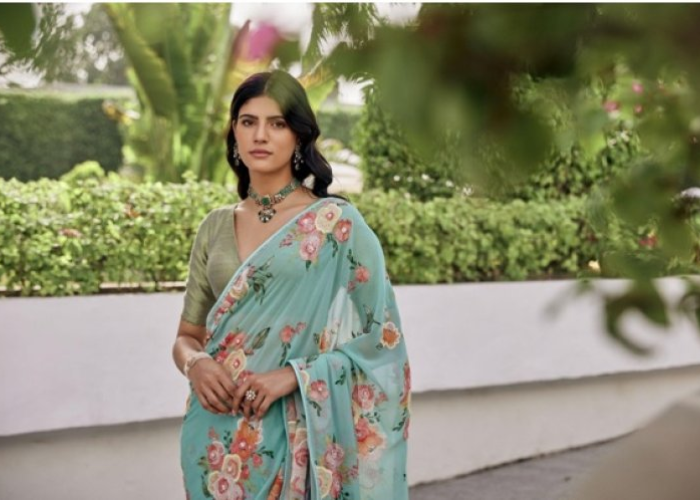Fashion and lifestyle have always been powerful tools for self-expression and cultural reflection. Over the years, these realms have undergone dynamic transformations, reshaping not only how we present ourselves to the world but also how we perceive our identities and interact with society. This article embarks on a journey through the evolving landscape of fashion and lifestyle, exploring the interconnected frontiers that have redefined style in unprecedented ways.
The Evolution of Style: From Conformity to Individuality
The history of fashion is a testament to humanity’s ceaseless quest for self-expression. Early civilizations used clothing and adornments as markers of status and tribal affiliations. However, it was during the Renaissance that the concept of individualism began seeping into fashion, breaking away from rigid societal norms. This trend towards personal expression gained momentum through subsequent centuries, reaching its pinnacle in the 20th century.
The 20th century witnessed the birth of numerous fashion movements that challenged the status quo. The flapper style of the 1920s embraced rebellion against traditional gender roles, while the punk movement of the 1970s defied conventional aesthetics with its anarchic attitude. These moments marked a seismic shift from conformity to individuality, setting the stage for the diverse and inclusive styles of today.
The Power of Subcultures: Navigating Identity Through Style
Subcultures have played a pivotal role in reshaping fashion and lifestyle frontiers. These underground movements often emerge as reactions to mainstream culture, providing marginalized groups with a platform for self-discovery and empowerment. One of the most influential subcultures, the LGBTQ+ community, has not only impacted fashion but has also catalyzed social change.
From the flamboyant ball culture of the 1960s to the gender-fluid fashion of today, the LGBTQ+ community has consistently pushed boundaries. Brands like ASOS and Zara have introduced gender-neutral clothing lines, recognizing the need for inclusive fashion that respects diverse identities. This shift underscores how fashion is no longer just about aesthetics—it’s a means of reclaiming and celebrating one’s identity.
Sustainability and Ethical Fashion: Paving the Way for Conscious Choices
As the fashion industry expanded, so did its environmental and ethical footprint. Fast fashion, characterized by rapid production and disposal of cheap clothing, gave rise to concerns about waste and exploitation. However, the 21st century marked a turning point as sustainability took center stage.
Consumers and brands alike began to prioritize eco-friendly materials, ethical labor practices, and mindful consumption. Fashion giants like Stella McCartney championed cruelty-free fashion, while smaller brands embraced upcycling and zero-waste principles. The rise of second-hand shopping and clothing rental platforms further highlighted the shift towards a more circular fashion economy. This movement showcases how style can be redefined through conscious choices that benefit both the wearer and the planet.
Digital Revolution: Virtual Identities and the Metaverse
The digital age catapulted fashion and lifestyle into a new dimension—the virtual realm. With the advent of social media, personal style became accessible to a global audience. Platforms like Instagram and TikTok transformed ordinary individuals into style icons, democratizing fashion influence. Moreover, the rise of online shopping reshaped consumer behavior, blurring the lines between brick-and-mortar stores and e-commerce.
Beyond social media and e-commerce, the concept of the metaverse emerged—a collective virtual shared space, merging physical and digital realities. In this space, individuals can experiment with their style without real-world constraints. Virtual fashion shows, digital clothing, and customizable avatars have opened doors to endless self-expression possibilities. As the metaverse continues to evolve, the very notion of style could become fluid, existing simultaneously in both real and virtual worlds.
Cultural Fusion: Globalization and Style Synthesis
In our interconnected world, cultural boundaries have become increasingly porous. This globalization has heavily influenced fashion and lifestyle, leading to the synthesis of diverse elements from around the world. The fusion of traditional designs with modern aesthetics has resulted in captivating new styles that celebrate multiculturalism.
Brands like Gucci and Louis Vuitton have incorporated motifs from different cultures into their collections, sparking discussions about cultural appropriation versus appreciation. The rise of cross-cultural collaborations and the popularity of fusion wear underscore the beauty of merging styles from various origins. This movement showcases how the global exchange of ideas can enrich and redefine fashion.
Challenging Beauty Standards: Inclusivity and Body Positivity
The conventional beauty ideals perpetuated by the fashion industry for decades have faced substantial backlash in recent years. The body positivity movement emerged as a response to the unrealistic standards propagated by media and advertising. It challenged the industry to acknowledge and celebrate bodies of all shapes, sizes, and abilities.
Inclusivity became more than just a buzzword; it became a driving force for change. Runways began featuring diverse models, and campaigns celebrated natural beauty. Brands like Fenty Beauty and Aerie led the charge by prioritizing authenticity over airbrushed perfection. This shift towards celebrating individuality has not only redefined beauty standards but has also profoundly impacted style—encouraging people to embrace clothing that makes them feel confident and comfortable in their own skin.
The Future of Fashion and Lifestyle: A Holistic Outlook
The journey through fashion and lifestyle frontiers illustrates a profound transformation—a shift from mere appearances to a holistic reflection of one’s identity, values, and aspirations. The future promises even more exciting changes, shaped by technology, sustainability, and evolving cultural dynamics.
Smart textiles embedded with technology could become commonplace, enabling clothing to adapt to different environments and monitor health. Virtual reality and augmented reality might further revolutionize the way we shop, allowing us to try on outfits virtually before making a purchase. Sustainable practices will likely become the norm, with brands exploring innovative materials and circular production models.
Conclusion
The journey through fashion and lifestyle frontiers is a testament to human creativity, resilience, and the relentless pursuit of self-expression. From the evolution of style individualism to the power of subcultures and the rise of conscious choices, these frontiers have redefined what it means to be stylish. As we stand on the cusp of the future, the potential for innovation is boundless, promising a world where fashion and lifestyle seamlessly intertwine with our ever-evolving identities.
